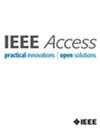高级网络钓鱼网站检测的多模态和时间图融合框架
IF 3.4
3区 计算机科学
Q2 COMPUTER SCIENCE, INFORMATION SYSTEMS
引用次数: 0
摘要
网络钓鱼攻击是动态发展的持续威胁之一,需要先进的检测机制来对抗更复杂的技术。传统的检测方法通常基于单模态特征或静态分析,无法捕捉到网络钓鱼网站的复杂性、多面性及其动态行为。因此,我们提出了一个鲁棒的多模态和时间图融合框架,集成了先进的学习范式,提高了网络钓鱼检测的准确性和适应性。我们的工作提出了四种全新的方法:多模态超图融合网络(MM-HFN)、带注意的时间图神经网络(TGNN-Att)、联邦图对比学习网络(FGCL-Net)和多模态时间超图融合网络(MMTHF-Net)。MM-HFN利用超图在文本级别(BERT)和基于图的特征(cnn)上捕获复杂的高阶关系,准确率在95-97%之间。TGNN-Att通过使用注意力增强的时间图网络和lstm来解决网络钓鱼行为的时间变化,提供94-96%准确率的动态检测。FGCL-Net通过联邦对比学习确保分散数据集的隐私保护学习,在保护数据隐私的同时达到93-95%的准确率。最后,MMTHF-Net将多模态和时间特征融合到一个动态超图框架中,达到了96-98%的准确率,f1得分为0.97。这些方法结合在一起,通过捕获静态和临时行为、高阶关系和跨模态特征,可以实现精确、实时的网络钓鱼检测。与现有的框架相比,所提出的框架有了显著的改进,消除了单模态和静态分析的缺点,同时提供了可扩展性、隐私性和适应性级别。本文章由计算机程序翻译,如有差异,请以英文原文为准。
Multimodal and Temporal Graph Fusion Framework for Advanced Phishing Website Detection
Phishing attacks are among the persistent threats that are dynamically evolving and demand advanced detection mechanisms to counter more sophisticated techniques. Traditional detection approaches are usually based on single-modal features or static analysis, failing to capture the complex, multi-faceted nature of phishing websites and their dynamic behaviors. Thus, we present a robust Multi-Modal and Temporal Graph Fusion Framework integrating advanced learning paradigms that enhance accuracy and adaptability in phishing detection. Our work proposes four brand-new methods: Multi-Modal Hypergraph Fusion Network (MM-HFN), Temporal Graph Neural Network with Attention (TGNN-Att), Federated Graph Contrastive Learning Network (FGCL-Net), and Multi-Modal Temporal Hypergraph Fusion Network (MMTHF-Net). MM-HFN leverages hypergraphs to capture complex, high-order relationships at textual levels (BERT) and graph-based features versus visual ones (CNNs) for an accuracy in the 95-97% range. TGNN-Att addresses temporal variations in phishing behavior by using attention-enhanced temporal graph networks and LSTMs, providing dynamic detection with 94-96% accuracy. FGCL-Net ensures privacy-preserving learning across decentralized datasets through federated contrastive learning, achieving 93-95% accuracy while safeguarding data privacy. Finally, MMTHF-Net fuses multi-modal and temporal features into a dynamic hypergraph framework, achieving state-of-the-art accuracy of 96-98% with an F1-score of 0.97. These approaches together allow for exact, real-time phishing detection by capturing static and temporal behaviors, high-order relationships, and cross-modal features. The framework proposed demonstrates significant improvements compared to the state of the art, eliminating the shortcomings of single-modality and static analysis while offering scalability, privacy, and adaptability levels.
求助全文
通过发布文献求助,成功后即可免费获取论文全文。
去求助
来源期刊

IEEE Access
COMPUTER SCIENCE, INFORMATION SYSTEMSENGIN-ENGINEERING, ELECTRICAL & ELECTRONIC
CiteScore
9.80
自引率
7.70%
发文量
6673
审稿时长
6 weeks
期刊介绍:
IEEE Access® is a multidisciplinary, open access (OA), applications-oriented, all-electronic archival journal that continuously presents the results of original research or development across all of IEEE''s fields of interest.
IEEE Access will publish articles that are of high interest to readers, original, technically correct, and clearly presented. Supported by author publication charges (APC), its hallmarks are a rapid peer review and publication process with open access to all readers. Unlike IEEE''s traditional Transactions or Journals, reviews are "binary", in that reviewers will either Accept or Reject an article in the form it is submitted in order to achieve rapid turnaround. Especially encouraged are submissions on:
Multidisciplinary topics, or applications-oriented articles and negative results that do not fit within the scope of IEEE''s traditional journals.
Practical articles discussing new experiments or measurement techniques, interesting solutions to engineering.
Development of new or improved fabrication or manufacturing techniques.
Reviews or survey articles of new or evolving fields oriented to assist others in understanding the new area.
 求助内容:
求助内容: 应助结果提醒方式:
应助结果提醒方式:


